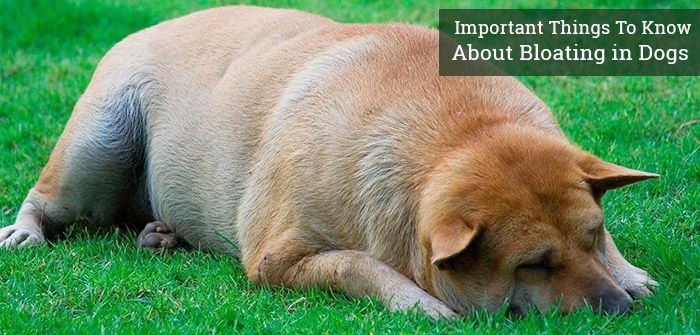Important Things to Know About Bloating in Dogs
Bloat in dogs is a very serious matter. Although bloat in humans is not very concerning, for dogs it’s life-threatening. It requires an immediate visit to the vet to rule out the diagnosis and provide immediate treatment. When you figured out that your dog has bloat, you shouldn’t wait for a single minute and take him to the nearest vet clinic straight away.
Many dogs die of bloat or Gastric Torsion because they weren’t treated on time. It is the second most leading cause of death in pets, so treat it as an emergency whenever you spot any signs of bloat.
What Is Bloat?
When the dog’s abdomen fills up with gas or liquid, it is termed as bloat. In this situation, the stomach fills up like a balloon. It is a very severe situation as a dog can die if he’s not treated immediately. Swollen or rigid abdomen can be the sign of bloat, which might not be visible in dogs with long fur, so ensure that you check it regularly.
What is Gastric Torsion?
Gastric Torsion means when the stomach twists or flips by itself. No one is certain if it occurs before bloat or after and it can be full or partial twist. Gastric torsion and twisting of the stomach is likely to occur when the stomach is bloated. And if it happens before bloat, the stomach will expand as the supply of fluid and food will be cut off.
Causes of Bloat in Dogs
While the cause of bloat is not completely clear, there are few things that contribute to it. The dog generally suffers from bloat when he has eaten a rather large meal and did heavy exercise after it. Older dogs and the dogs weighing more than 40 kg are more susceptible to suffer from this condition.
Below are some common dog habits that increase the risk of bloat in dogs –
- Eating one or two large meals in a day
- Weighing more than 40 kg
- Finishing the meal very quickly
- Underweight dogs
- Anxious or scared temperament
These habits can put your dog at the risk of Gastric Torsion or Bloat, so every pet owner should remember them when feeding their dog.
Signs and Symptoms of Bloat
Agitated or Restless
When the dog is in pain, he will start getting restless and walk around the house. Because of bloat, he won’t be comfortable so you will also see some changes in his behaviour.
Swollen Abdomen
Except in some breeds, this is a very clear sign of bloat. If the dog is feeling restless, check his abdomen to see if it’s distended. If the dog doesn’t let you come near him or wince when you touch his abdomen, he must be in pain because of this problem.
Drooling or Panting
Due to bloat, the dog will become nauseous so his mouth will produce excessive saliva. He’ll start panting as he won’t get enough oxygen.
Retching
When the stomach is twisted, the dog will feel the need to vomit but won’t able to. He will try to relieve the pain and start retching when it becomes unbearable. This will lead to excessive drooling.
Irregular Heartbeats
The pain sends the dog into panic mode, resulting in a panic attack or increased heart rate. Bloated abdomen causes strain on blood muscles such that sufficient blood doesn’t reach the heart which causes irregular heartbeats.
Pale Gums
The colour of the dog’s gums defines his health. Pink coloured gums indicate the healthy dog. So when anything causes pressure on heart, it turns the colour of gums into white or pale pink.
To reduce the risk of bloat in your dog, keep a gap between his meal and exercise. Provide him with nutritious diet to maintain his stamina. There is nothing more you can do except taking care of your dog & encouraging a healthy lifestyle.
Bloat or Gastric Torsion is a medical emergency. If you notice any signs, make a call to your pet and ask if it’s something to be concerned about. Every single minute is crucial and any kind of delay can be fatal to your dog. So, be aware and always check for signs of bloat.


